The season 14 finale of Doctor Who, titled “Empire of Death,” revisited the intriguing memory TARDIS concept, incorporating numerous callbacks to the franchise’s rich history. The episode not only delivered a captivating narrative but also offered fans a treasure trove of Easter eggs that harkened back to both the classic and modern iterations of the beloved series. As the storyline unfolded, viewers were treated to a journey into the TARDIS, showcasing various items that held significance in the Doctor’s past.
Throughout “Empire of Death,” audiences were brought along with the Fifteenth Doctor, Ruby, and Mel—three pivotal characters from season 14—who found themselves surrounded by these cleverly integrated nods to earlier adventures. The presence of the memory TARDIS served as a poignant reminder of the seminal moments that shaped the Doctor’s identity over decades, blending nostalgia with new storytelling.
15
The Fifteenth Doctor’s Jukebox
The Time Lord’s Newest Console Room Addition
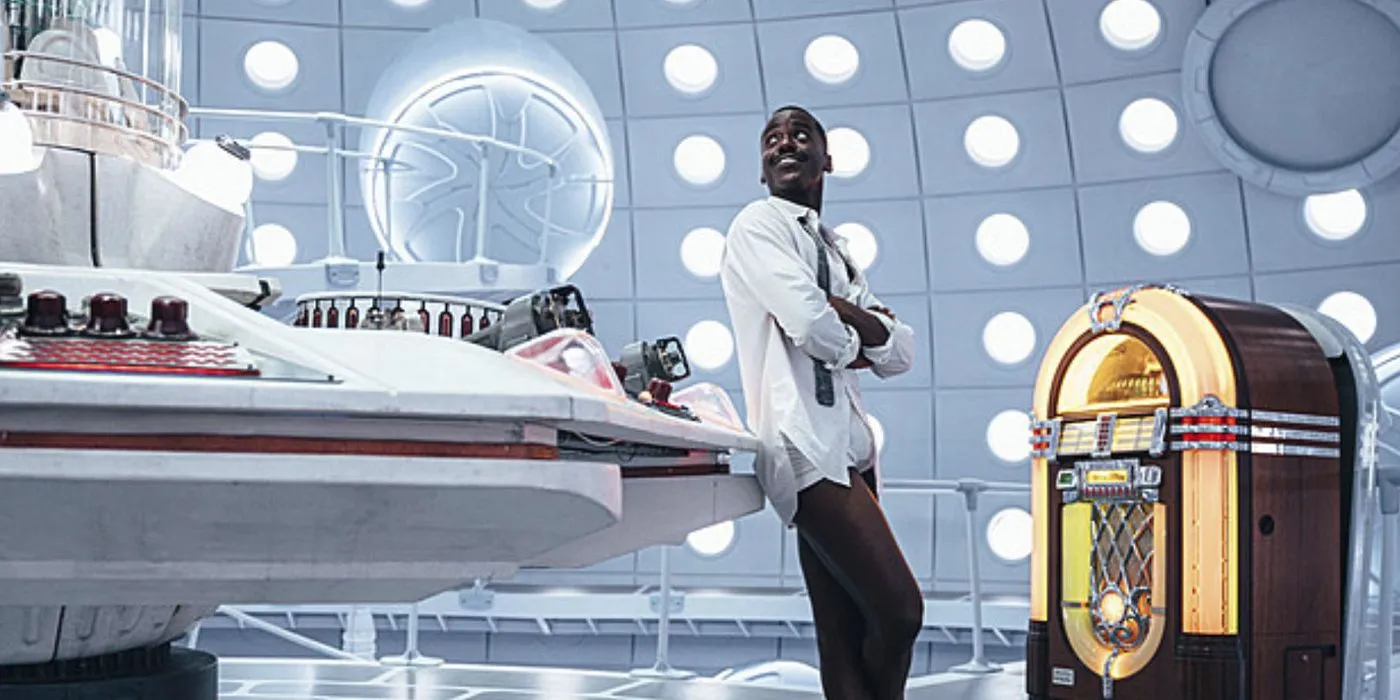
A miniature jukebox now resides in the memory TARDIS, marking a fresh addition since its introduction in the 60th-anniversary special The Giggle. This novel item appeared after the Doctor’s transformation during the bi-generation, and its placement is a unique distinction from the previous TARDIS of the Fourteenth Doctor. The Doctor has a long-standing fondness for jukeboxes, as highlighted during the Ninth Doctor’s time when his musical joys were evident.
14
Who 1 License Plate
A Nod to the Third Doctor’s Car, Bessie
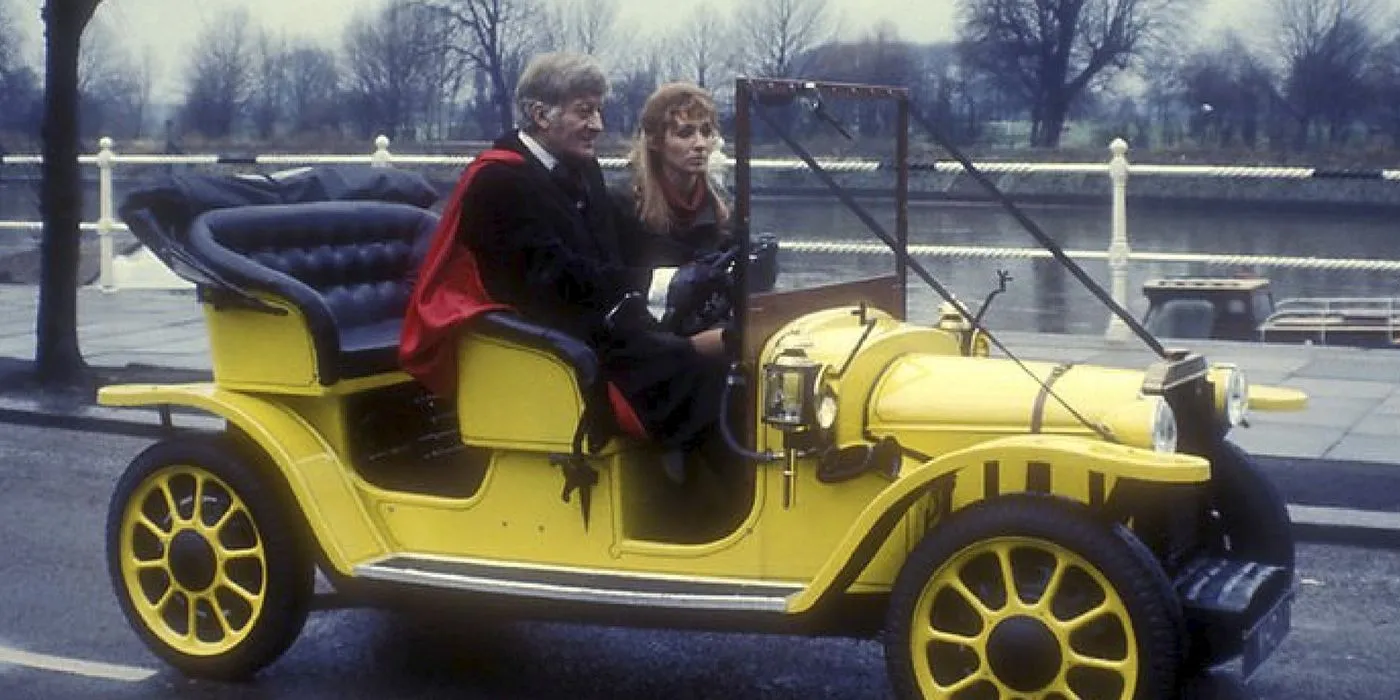
Another notable artifact within the memory TARDIS is the famed WHO 1 license plate, a tribute to the Third Doctor and his beloved car, Bessie. Bessie, a Siva Tourer, served the Doctor during his exile on Earth and became a quintessential part of the show’s early narratives. Besides being a mode of transport, Bessie was outfitted with various fantastical features, demonstrating the Doctor’s inventive prowess.
13
Mel’s Ribbon
A Nostalgic Reunion for Mel
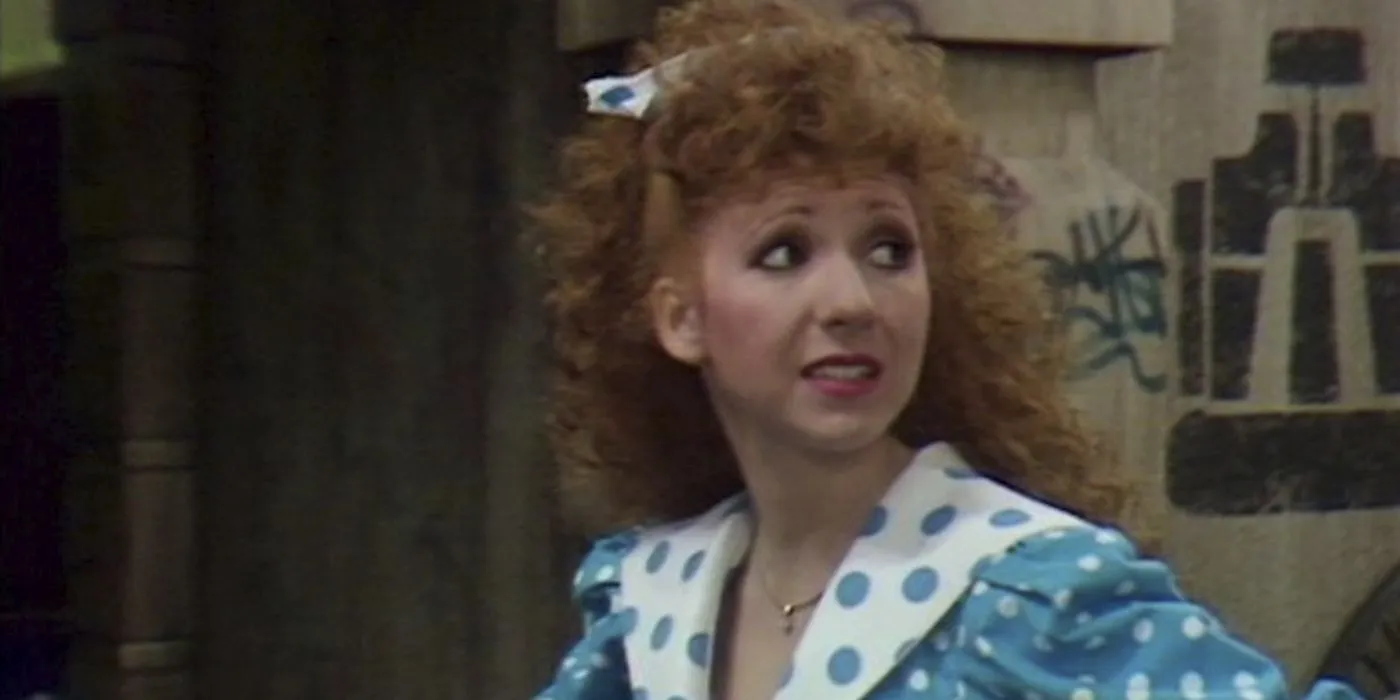
During her journey within the memory TARDIS, Mel Bush unexpectedly rediscovered a familiar red polka dot ribbon, reminiscent of her vibrant, colorful wardrobe. Known for her iconic style during her tenure on the show, the ribbon sparked a wave of nostalgia, reflecting on her adventures alongside the Doctor without the need for dialogue.
12
The Sixth Doctor’s Coat
Reminiscing Over Bright Attire
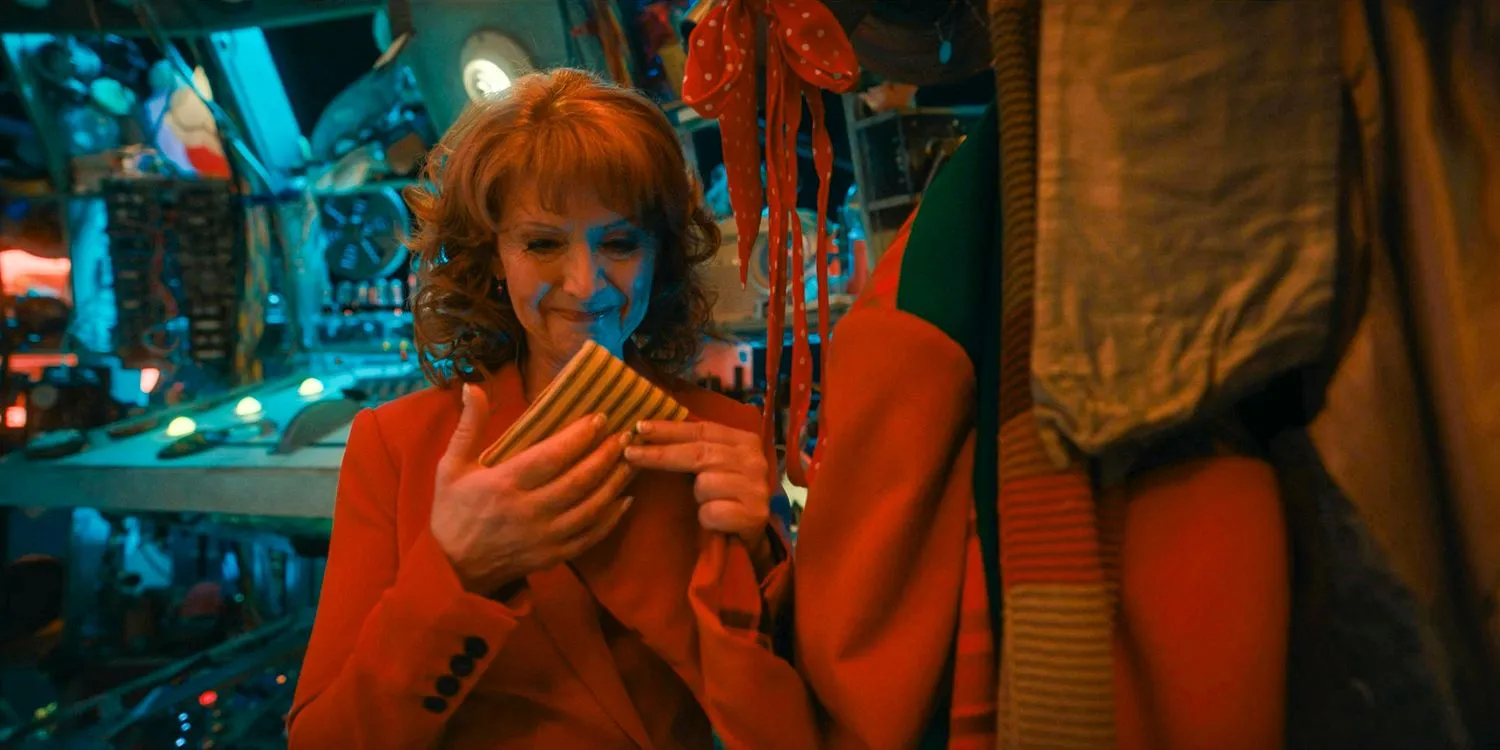
Another prominent item that caught Mel’s attention was the Sixth Doctor’s famously flamboyant coat, recognized for its patchwork design and kaleidoscopic hues. Colin Baker, who portrayed the character, described it with flair, likening it to “an explosion in a rainbow factory,” a fitting metaphor reflecting its memorable and polarizing presence.
11
The Doctor’s Old Sonic Screwdrivers
Evolution of the Time Lord’s Essential Tool
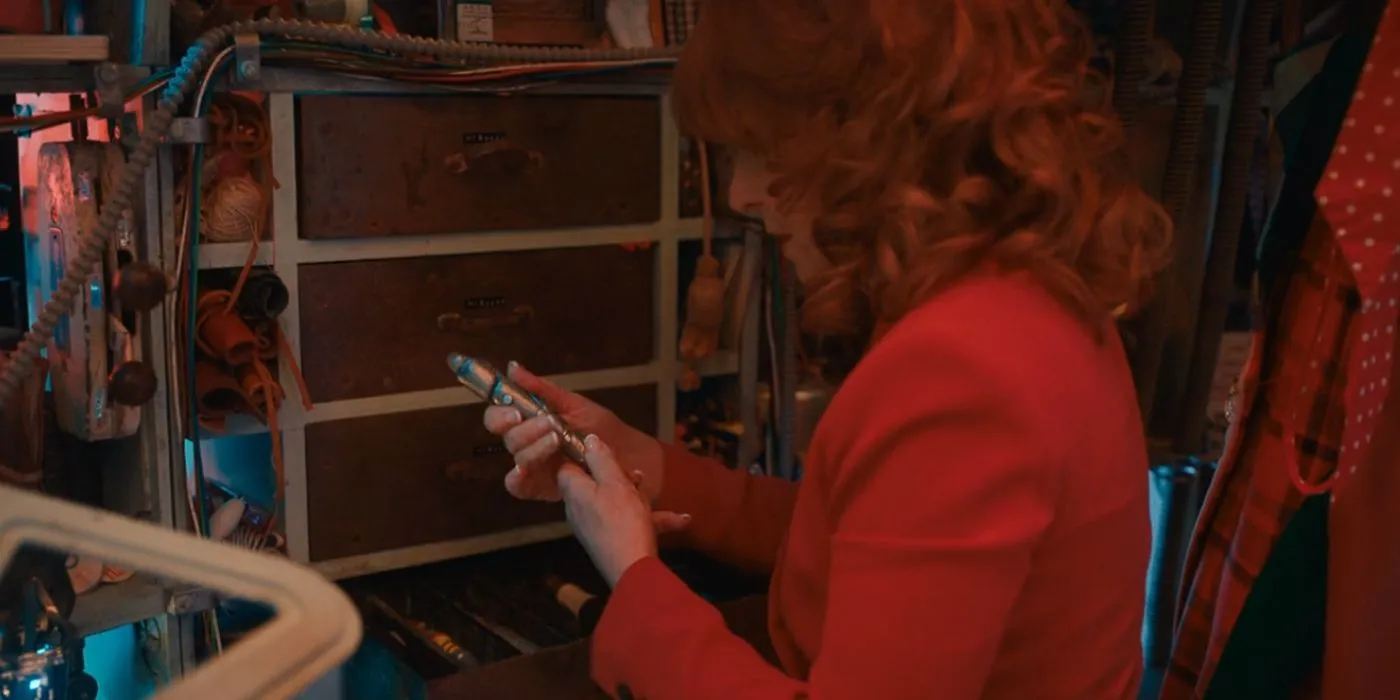
Amidst the array of memories, Mel rifled through a collection of the Doctor’s various sonic screwdrivers, evidence of the Time Lord’s evolving technology. The sonic’s capabilities have grown significantly, such as the Fourteenth Doctor’s recent power to create force fields, marking a notable advancement in its history.
10
The Fourth Doctor’s Scarf
The Iconic Woolen Accessory
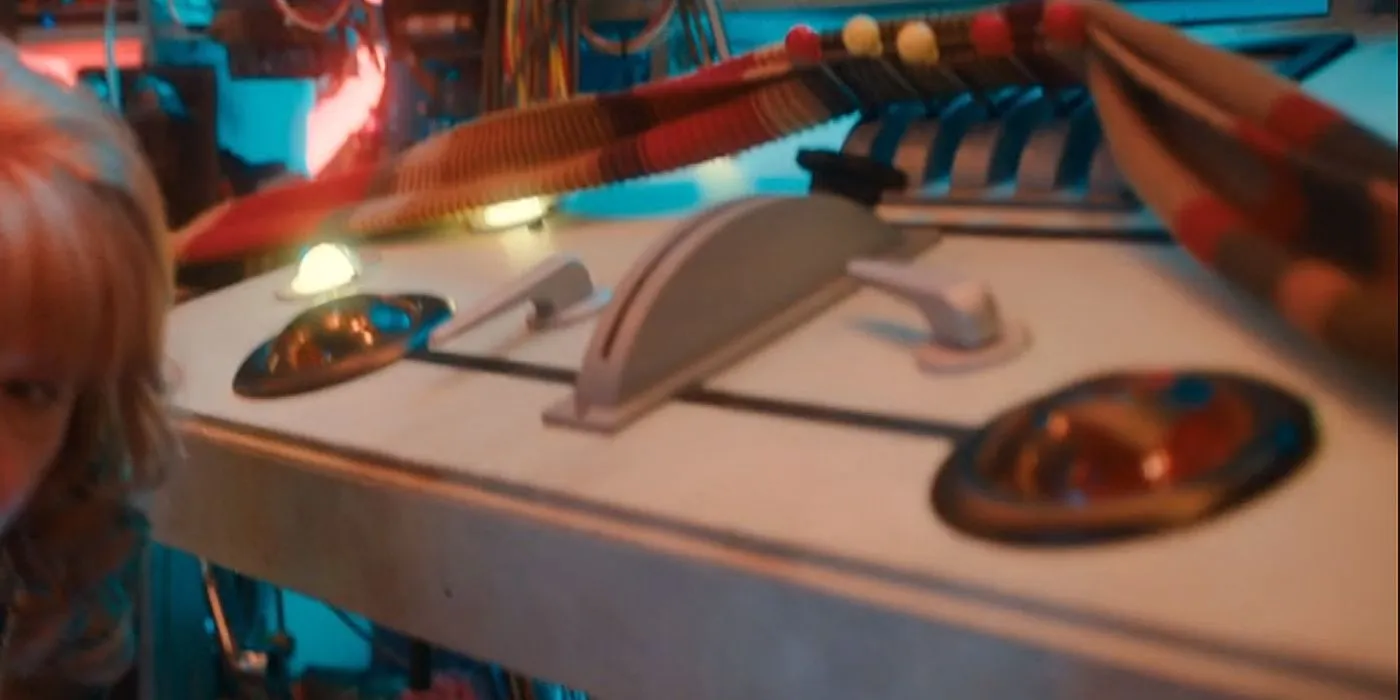
Among the memorable items in the memory TARDIS is the Fourth Doctor’s legendary scarf, a symbol of his distinctive persona. Extending far beyond the typical lengths, the multi-colored scarf became a beloved item for fans. It was originally knitted for the Doctor by Madame Nostradamus as a gift, securing its place in Whovian lore.
9
Past TARDIS Consoles
A Look at the TARDIS Evolution
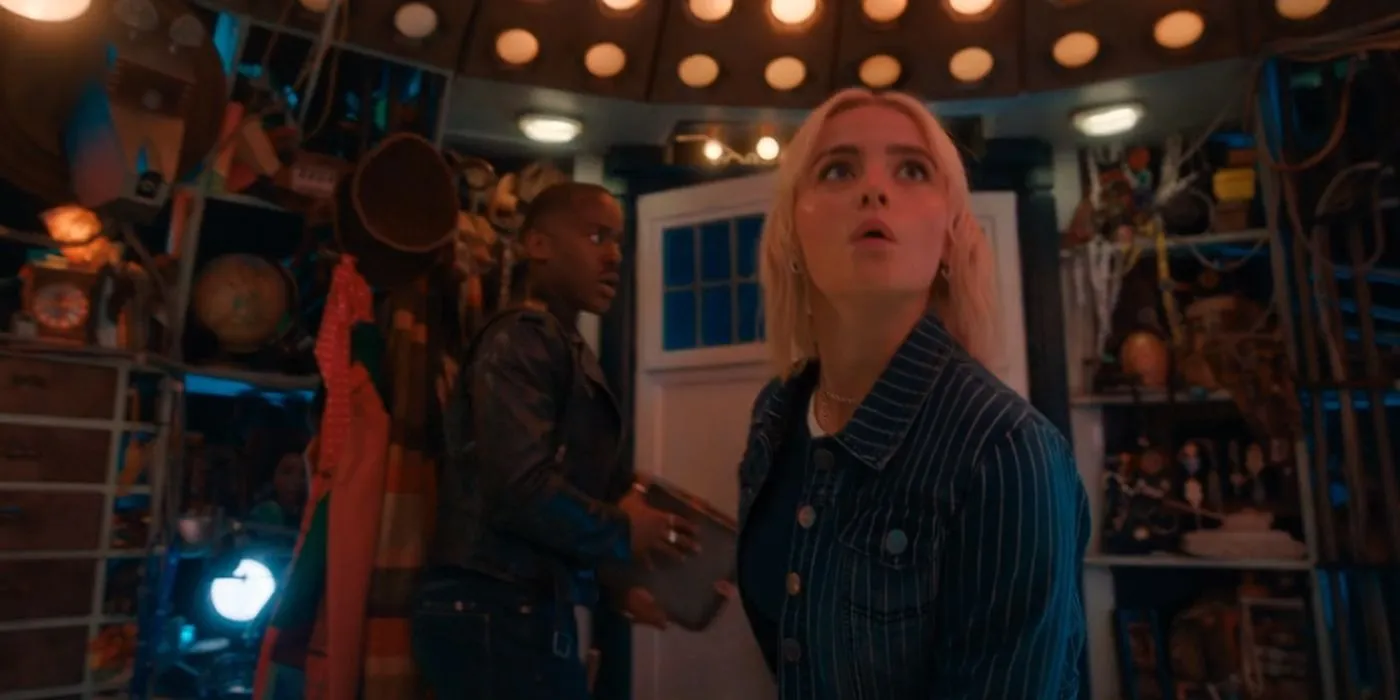
Inside the memory TARDIS, elements from previous TARDIS consoles make an appearance, reflecting the Doctor’s many regenerations. Notably, features from the Thirteenth Doctor’s console room and the classic time rotor from “The Three Doctors”are present, signifying the fluid nature of the TARDIS’s design across time.
8
The Impossible Things Book
Echoes of the Past: Verity Newman’s Journal
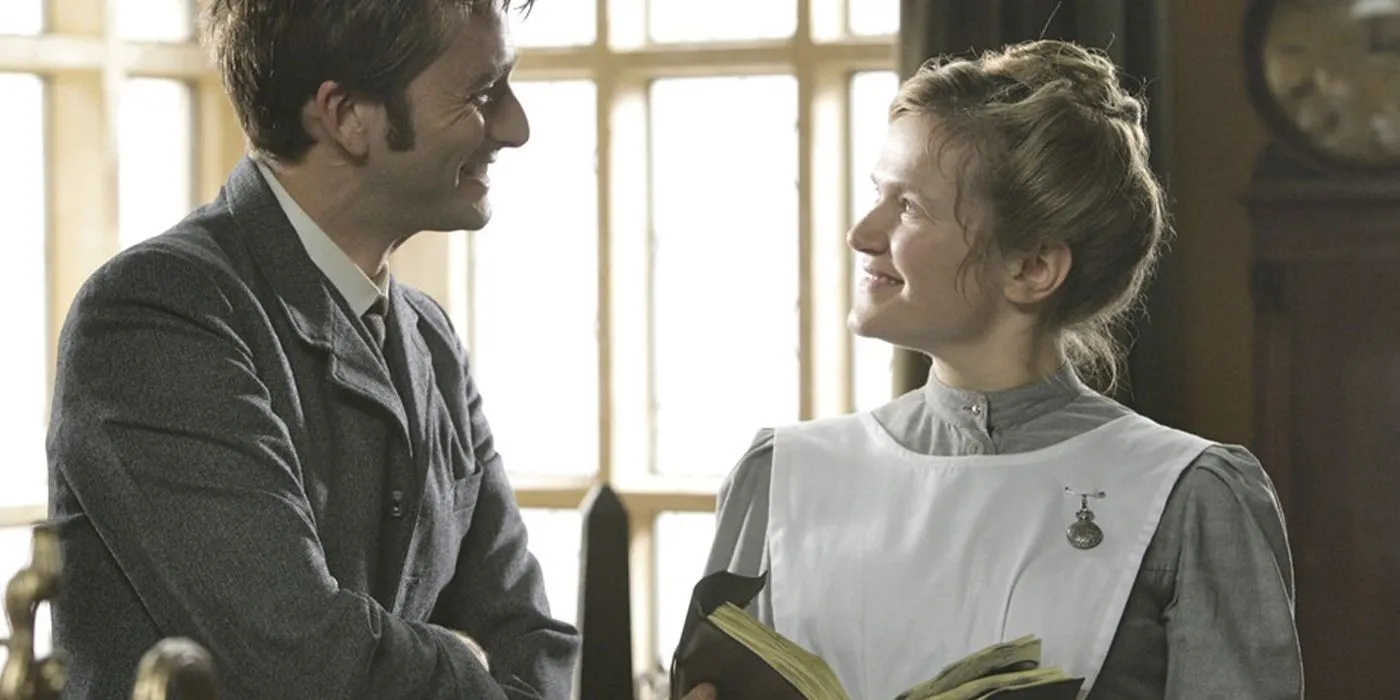
Among the collected items, Mel discovered Verity Newman’s book, A Journal of Impossible Things, detailing the life of her great-grandmother Joan Redfern and her relationship with John Smith, the Doctor’s human persona. This reminiscence highlights the timeless connections formed through companionship and trauma in the Whoniverse.
7
The Seventh Doctor’s Jumper
A Distinctive Style from the Seventh Doctor
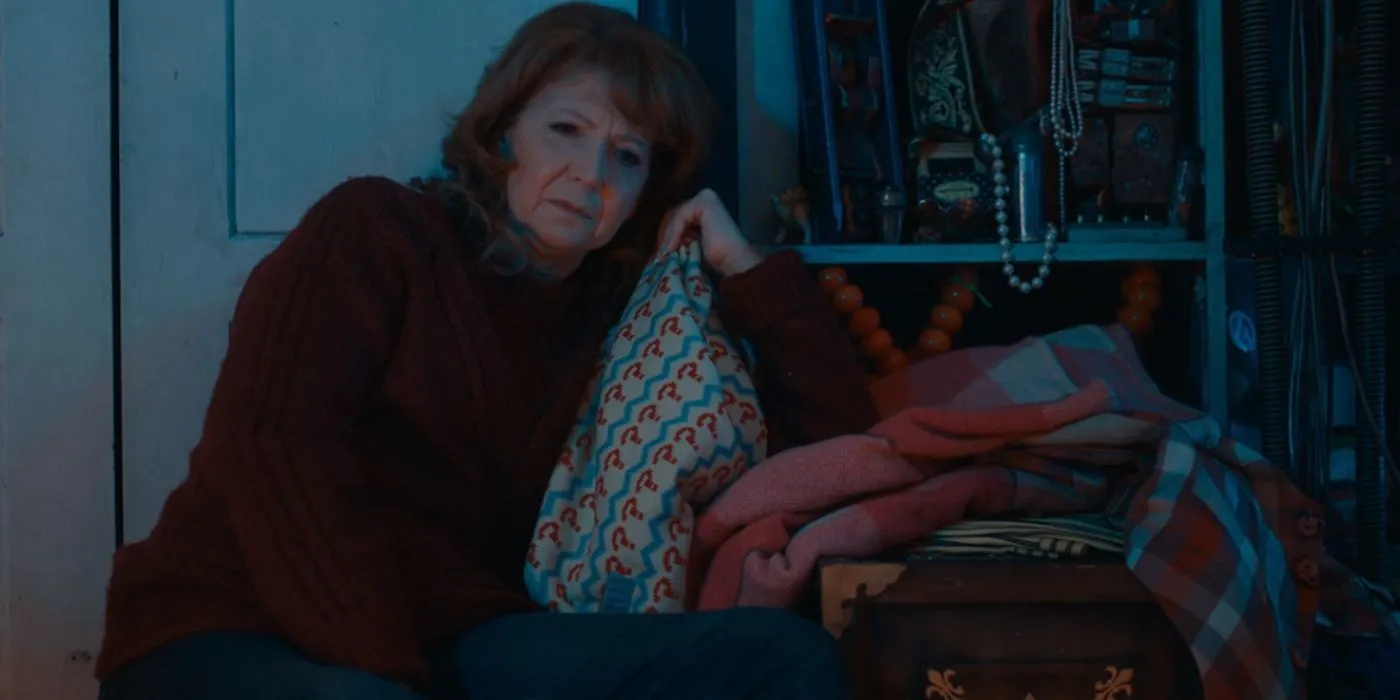
The Seventh Doctor’s iconic cherry-red jumper adorned with question marks also made a noteworthy appearance in the memory TARDIS. This distinctive garment highlighted the character’s playful yet serious nature and was indicative of the Doctor’s transition into a more enigmatic persona.
6
Handles The Cyberman Head
Remembering an Unlikely Companion
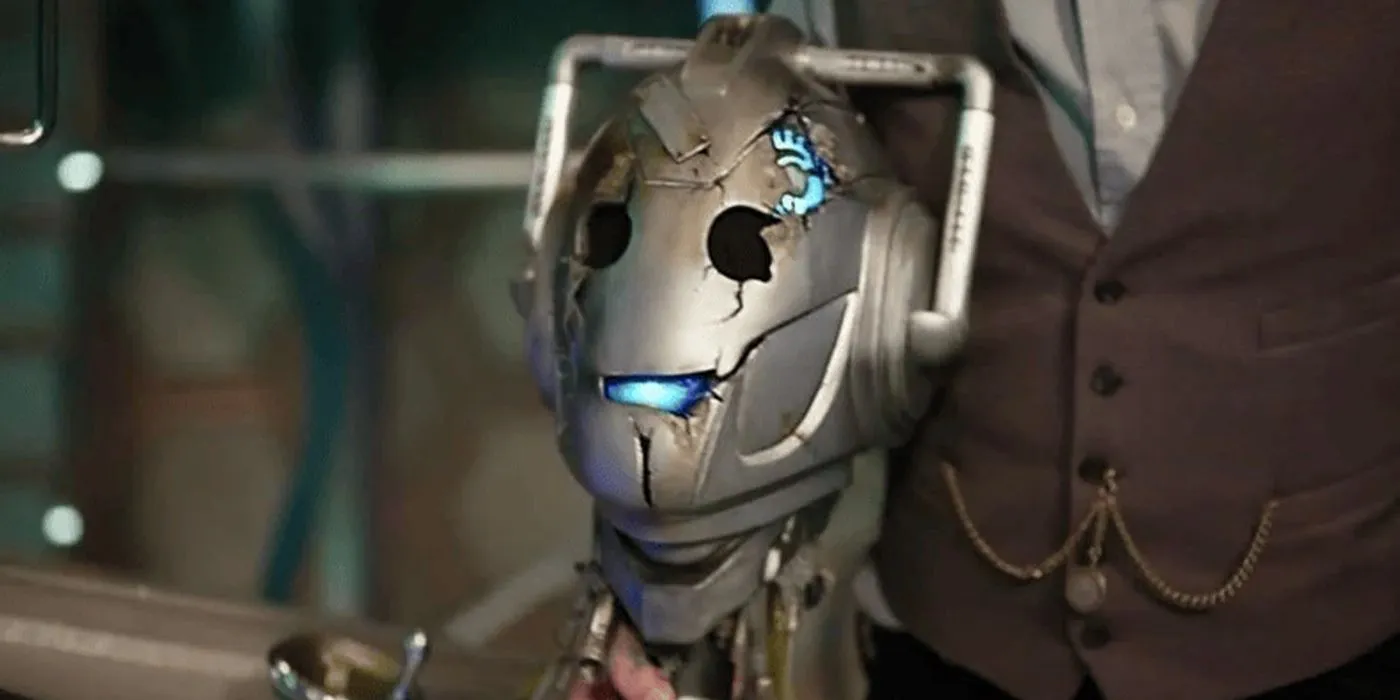
The Cyberman head, Handles, from “The Time of the Doctor,” serves as a poignant reminder of the Eleventh Doctor’s lonely yet impactful journey on Trenzalore. Handles stood as a symbol of the Doctor’s resilience, embodying his capacity to find companionship in even the most unconventional forms.
5
The TARDIS’ Fire Extinguisher
A Symbol of Past Adventures
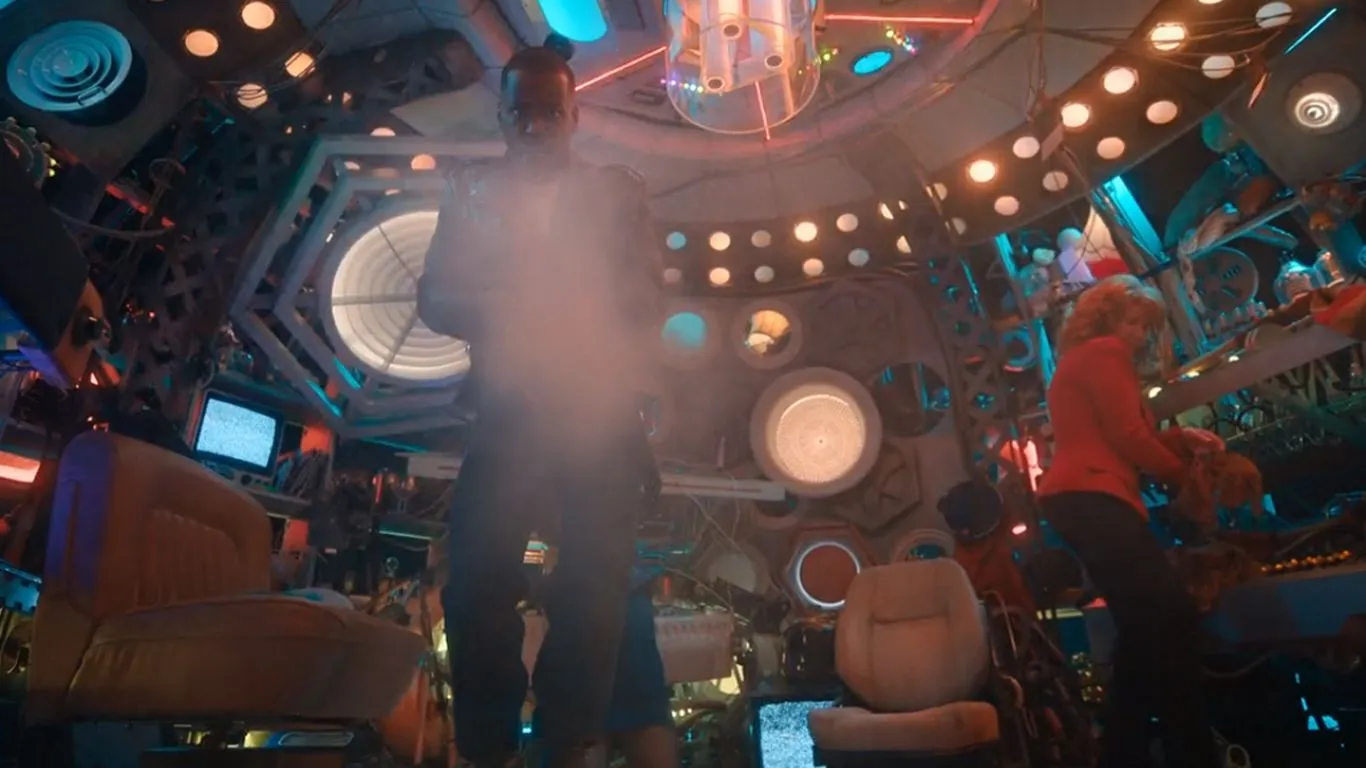
In a thrilling sequence, the memory TARDIS caught fire, echoing moments from Tenth and Eleventh Doctor adventures. The fire extinguisher, drawn from the series’ lore, was integral in past episodes where it served not just as safety equipment but as a prop of last-minute heroism, blending the absurd with the critical moments of danger.
4
The Clockwork Droid Head
A Tribute to Historical Villains
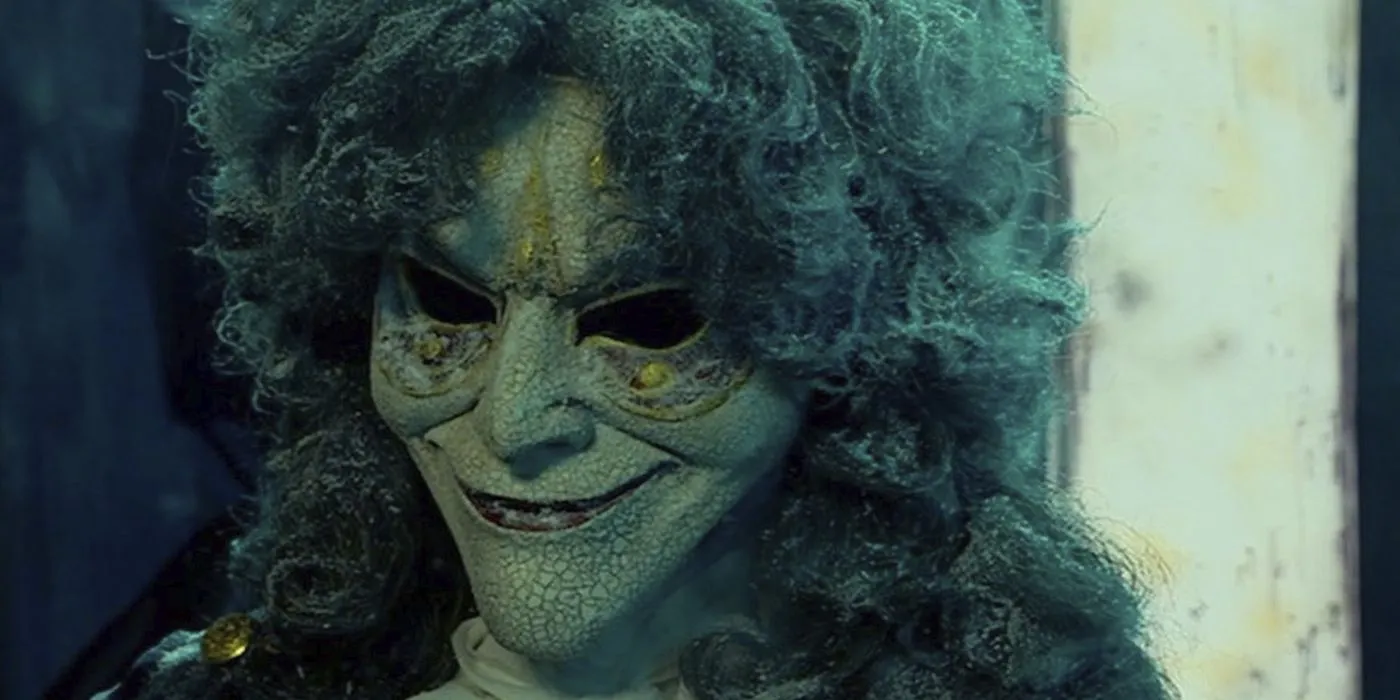
One particularly memorable item in the memory TARDIS was the head of a clockwork droid, resurrecting memories of the Tenth Doctor’s significant encounter with Madame De Pompadour in “The Girl in the Fireplace.” This ingeniously sinister villainry remains vital to the narrative, symbolizing the recurring themes of love and loss.
3
The TARDIS’ Out Of Order Sign
The First Doctor’s Clever Ruse

A simple yet effective “out of order”sign harkened back to the First Doctor’s attempt to deter nosy police officers. Originally utilized in 1966, this prop serves as a whimsical reminder of the Doctor’s precarious relationship with both time and authority, encapsulating the show’s blend of humor and cleverness.
2
A Tin Of Custard
A Sweet Reference to Friendship
A curious tin of custard evoked fond memories of the Eleventh Doctor sharing “fish fingers and custard” with young Amelia Pond, underlining their unique bond. This whimsical culinary choice became a lasting touchstone throughout their adventures, showcasing the quirky yet heartfelt connections that define the series.
1
The Spacesuit Helmet
Orange Spacesuits Across the Generations
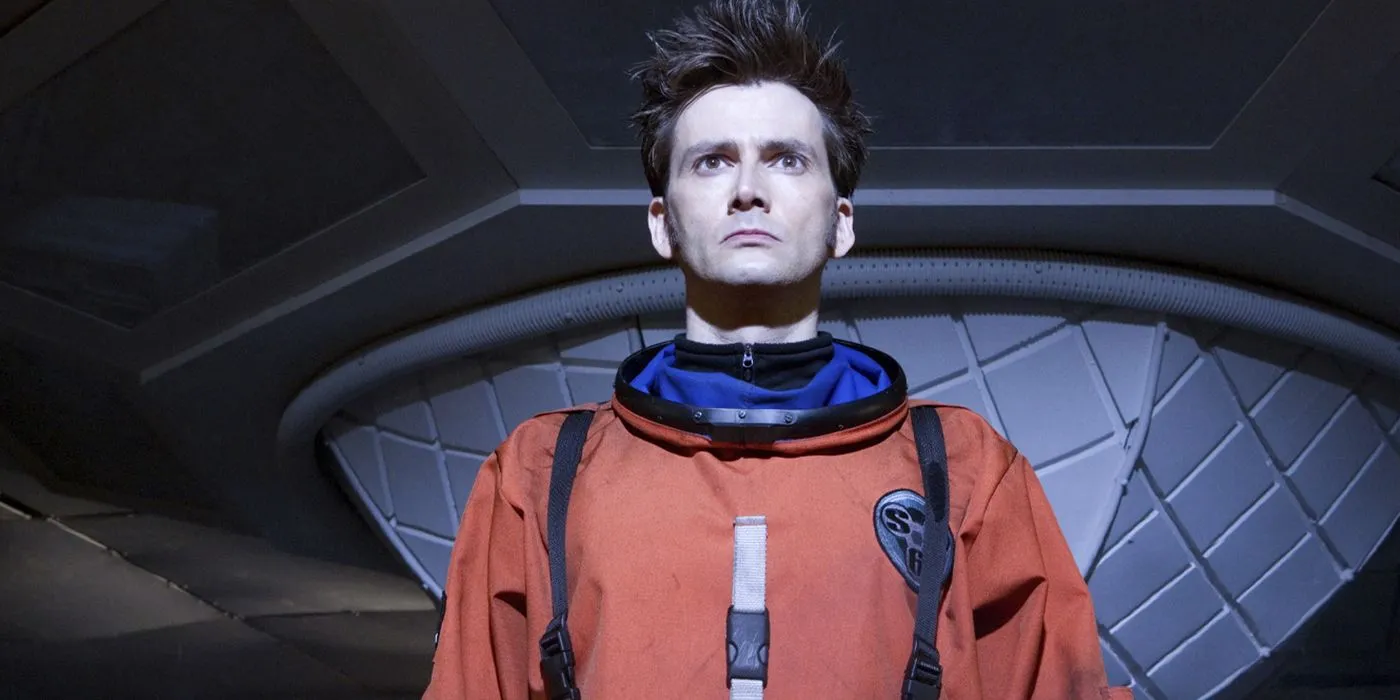
The spacesuit, chronicling multiple incarnations of the Doctor, is a significant item found within the memory TARDIS. Notably assembled for various escapades, including notable appearances by the Tenth and Twelfth Doctors, it represents the Time Lord’s adventurous spirit and adaptability in navigating treacherous environments.
A Tradition of Easter Eggs Beyond “Empire of Death”
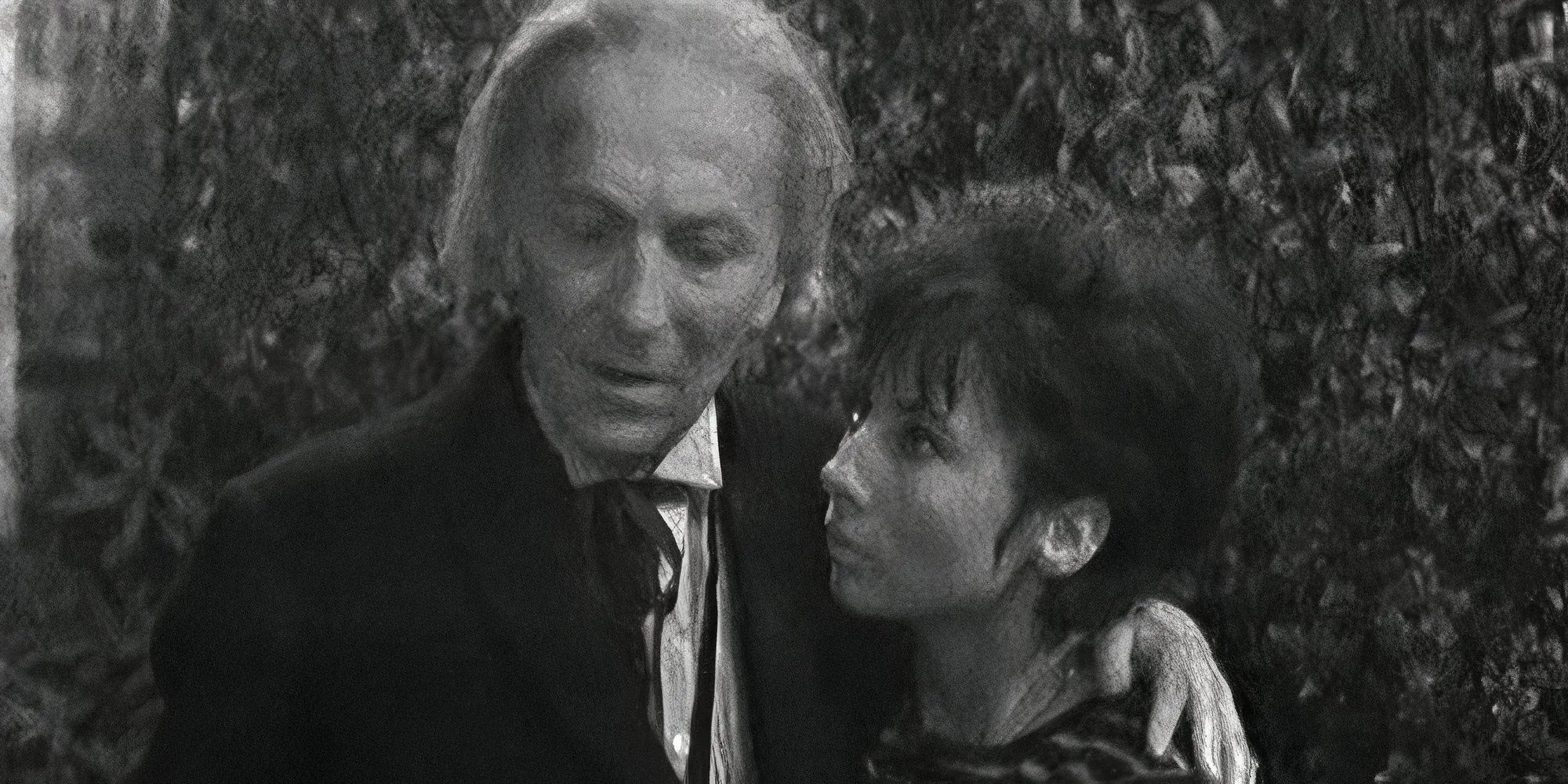
The memory TARDIS is just one of several episodes within season 14 of Doctor Who to celebrate the franchise’s history through Easter eggs. The homage to the series’ past reaches beyond this finale, with numerous subtly woven references enhancing the overall narrative. For instance, episode two, The Devil’s Chord, includes callbacks to earlier seasons, including mentions of the Doctor’s first companion, Susan Foreman.
Each callback reinforces the ongoing evolution of the Doctor’s story while providing nostalgic touches that resonate with longtime viewers. Additionally, the season premiere, Space Babies, introduced layers of references that link back to earlier Doctor Who lore, including reimagined technology and circumstances familiar to ardent fans, showcasing the enduring legacy of the Time Lord’s journeys. Future episodes, including “Empire of Death,” are set to continue this pattern, enriching the Doctor Who narrative tapestry and connecting old stories with new adventures.


